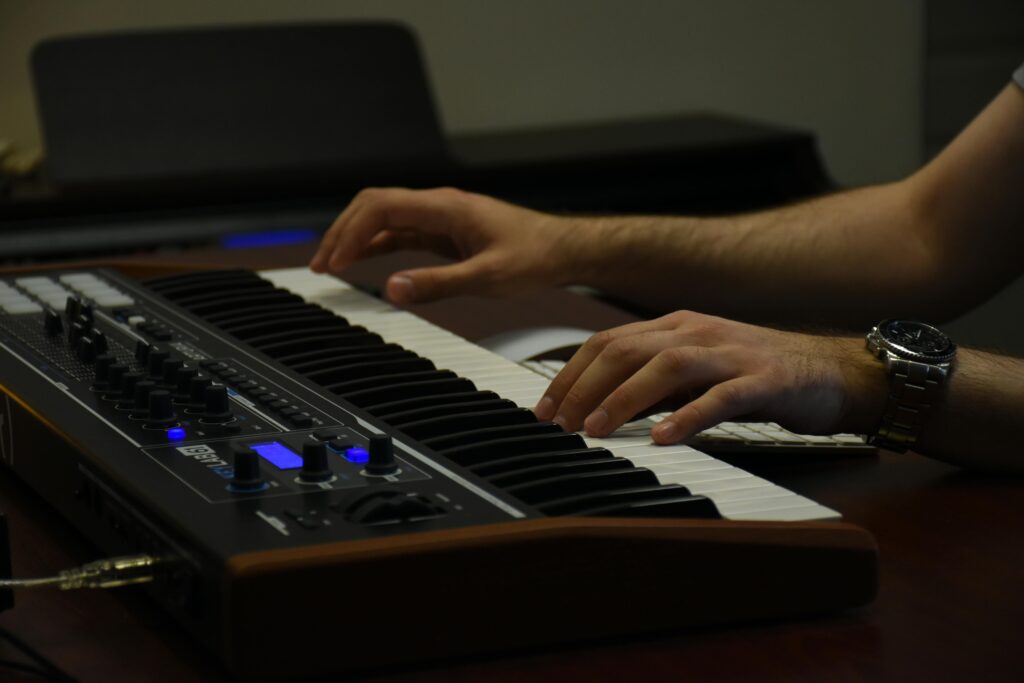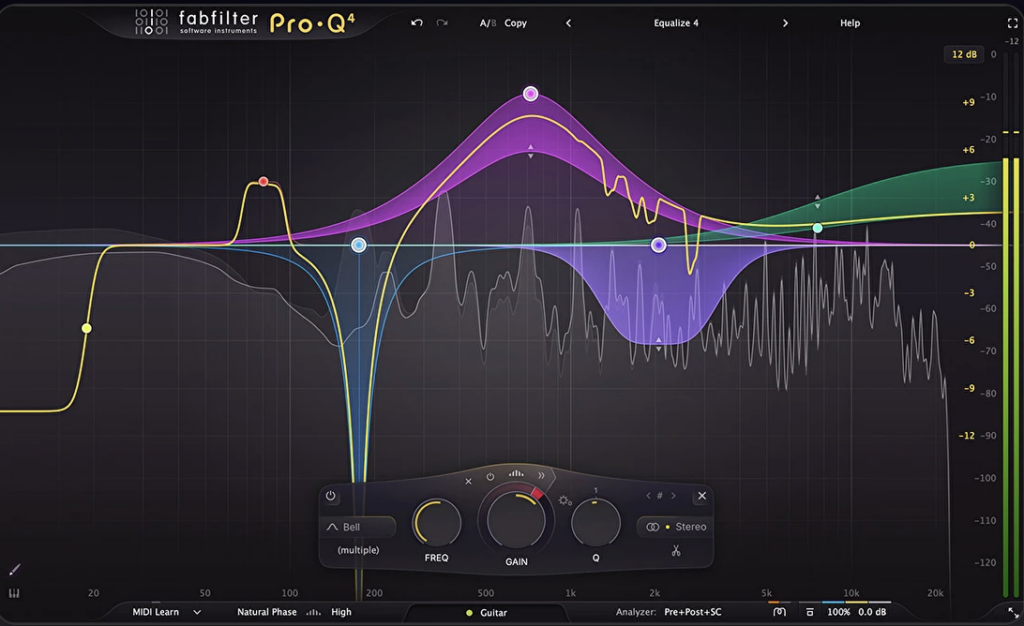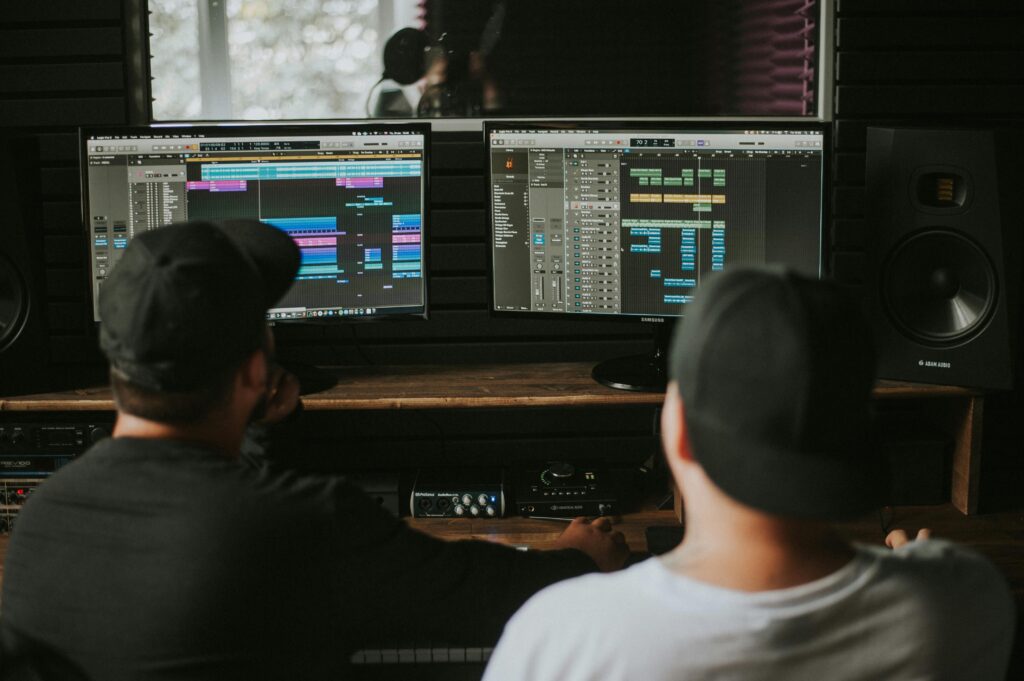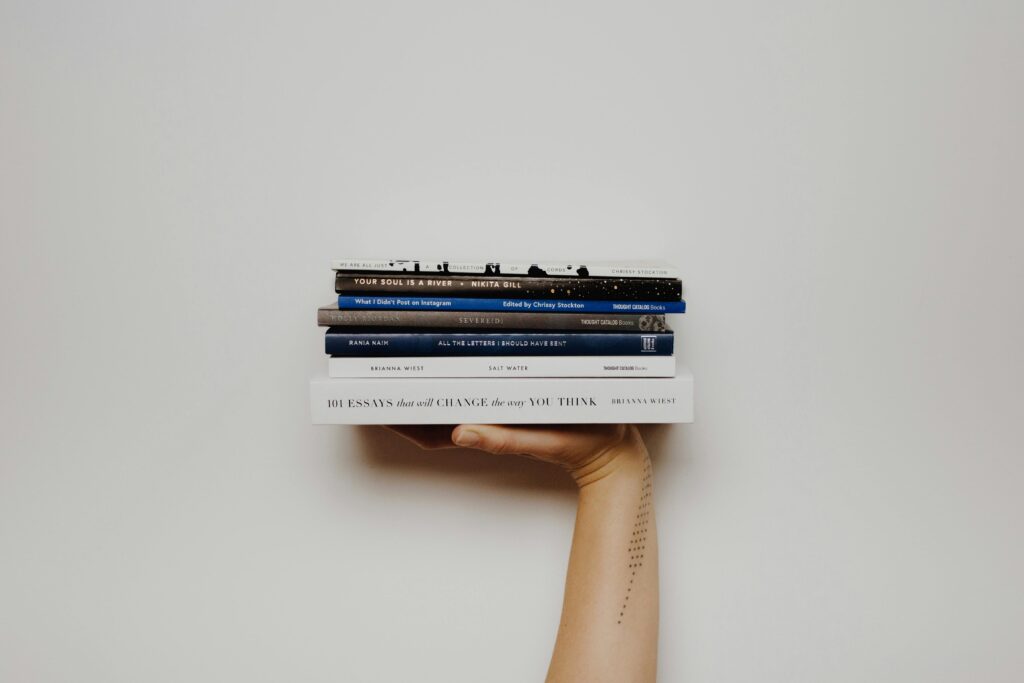Introduction
As a musician, you know that exceptional performance requires more than just technical skill. The mental and emotional aspects of music-making are equally important, yet often overlooked in traditional training. Whether you’re a seasoned professional battling performance anxiety or an emerging artist seeking to deepen your musical expression, the practice of meditation offers powerful tools to enhance your craft. Research shows that performers who incorporate mindfulness and meditation into their routine experience reduced anxiety, improved focus, enhanced creativity, and a stronger connection with their audience. This comprehensive guide explores how meditation practices can transform your musical performance and stage presence, providing practical techniques specifically designed for musicians. From managing pre-performance jitters to achieving flow state during performances, meditation offers a pathway to not only becoming a better performer technically but also experiencing greater fulfillment and authenticity in your musical expression. Read on to discover how integrating meditation into your practice regimen can help you reach new heights as a musician while maintaining your mental and emotional well-being.
This a in-depth article that gives you a deep-dive into the world of meditation. If you want a shorter introduction please read this article:
Recommended Books
For musicians seeking to deepen their understanding and practice of meditation, a well-chosen selection of books can provide valuable guidance. Check out our blog article about recommended books HERE or click the button bellow. The following curated recommendations in the article offer perspectives from both meditation experts and musicians who have integrated contemplative practices into their artistic lives.
The Science Behind Meditation for Musicians
Musicians face unique mental and physical challenges that can significantly impact their performance quality. Research has consistently demonstrated the neurological and physiological benefits of meditation that directly address these challenges.
How Meditation Affects the Musician’s Brain
When musicians meditate regularly, several significant changes occur in the brain that directly benefit musical performance. Functional MRI studies show increased activity in the prefrontal cortex, the area responsible for focused attention and working memory. This enhancement allows performers to maintain concentration on complex musical passages while remaining aware of ensemble dynamics.
Research from the Harvard Medical School demonstrates that meditation increases cortical thickness in areas associated with auditory processing. For musicians, this translates to improved listening skills and sonic awareness—essential qualities for precise intonation and ensemble playing. Dr. Sarah Davidson, a neuroscientist specializing in music cognition, explains: “The neural pathways strengthened through meditation are often the same pathways we use when deeply engaged in musical activities.”
Another critical benefit is the enlargement of the corpus callosum, which improves communication between the brain’s hemispheres. For musicians, this enhanced interhemispheric communication facilitates the integration of technical precision (typically left-brain dominant) with emotional expression (typically right-brain dominant), resulting in more cohesive and compelling performances.
The production of alpha and theta brainwaves during meditation is particularly beneficial for musicians. These brainwave states are associated with creativity, insight, and the “flow state” that characterizes peak musical performances. Regular meditation effectively trains the brain to access these states more readily during practice and performance situations.
Physiological Benefits for Performers
Beyond neurological changes, meditation provides tangible physiological benefits that directly impact physical aspects of musicianship. The regulated breathing techniques central to most meditation practices improve respiratory control—a fundamental skill for wind instrumentalists, singers, and even string players who unconsciously synchronize their breathing with musical phrases.
Research published in the Journal of Performance Psychology found that musicians who meditated for eight weeks showed significantly lower heart rates and blood pressure in performance situations compared to control groups. This reduced physiological arousal translates to steadier hands, more controlled breathing, and reduced muscle tension—all essential for technical execution.
Meditation also increases heart rate variability (HRV), a measure of the autonomic nervous system’s flexibility. Higher HRV indicates better stress resilience and the ability to quickly recover from performance-induced stress. A study from the Royal College of Music found that performers with higher HRV measurements demonstrated greater technical consistency under pressure.
For instrumentalists concerned with repetitive strain injuries and performance-related physical problems, meditation’s impact on muscle tension is particularly valuable. The body scan techniques and mindful awareness practices help musicians identify and release unnecessary tension in specific muscle groups before it leads to technical limitations or injury.
Emotional Regulation and Performance Anxiety Management
Perhaps the most immediate benefit for performers is meditation’s proven effect on anxiety reduction and emotional regulation. Performance anxiety affects an estimated 60-90% of professional musicians at some point in their careers, with potentially career-limiting consequences.
A landmark study in the Journal of Behavioral Medicine demonstrated that mindfulness meditation reduced cortisol levels (the primary stress hormone) by an average of 31% in performers before high-pressure situations. This hormonal regulation helps musicians avoid the “fight-or-flight” response that can derail performances.
Cognitive behavioral researchers have found that meditation develops metacognitive awareness—the ability to observe one’s thoughts without becoming entangled in them. This skill allows performers to acknowledge performance anxiety without being dominated by it. As concert pianist and meditation advocate Michael Bernard notes, “Meditation taught me to recognize anxious thoughts as just thoughts, not reality. That distinction has transformed my relationship with performance.”
Emotional regulation extends beyond anxiety management. Musicians who meditate report greater access to authentic emotional expression in their performances. This heightened emotional intelligence allows performers to communicate more effectively through their music, resulting in performances that audiences describe as more moving and genuine.

Meditation Techniques Specifically for Musicians
While general meditation practices offer significant benefits, certain techniques are particularly valuable for addressing the specific challenges musicians face. These targeted approaches can be incorporated into daily practice routines and pre-performance rituals.
Focused Attention Meditation for Technical Precision
Focused attention meditation, which involves sustaining attention on a single object (such as the breath), directly enhances the concentration needed for technical mastery. This practice strengthens the prefrontal neural networks responsible for sustained attention and working memory.
To adapt this technique specifically for musicians, try this variation during practice sessions:
- Begin by setting a metronome to a moderate tempo
- Play a challenging technical passage while maintaining complete awareness of each note
- When your mind wanders (as it inevitably will), gently return focus to the precise execution of each note
- Gradually extend the duration of this focused practice, building the mental stamina necessary for sustained performance
Violinist and meditation teacher Sophie Williams recommends a variation she calls “Single Note Meditation”: “Spend five minutes playing a single note, exploring every aspect of its production—the exact bow pressure, the precise finger placement, the specific tonal quality. This deep attention to a single element transfers to more complex playing.”
Open Monitoring Meditation for Ensemble Awareness
For musicians who perform in ensembles, the ability to maintain awareness of multiple elements simultaneously is essential. Open monitoring meditation, which involves non-judgmental awareness of all sensory inputs without fixating on any single element, develops this capacity.
Chamber musicians report particular benefits from this practice:
- During rehearsals, spend 5-10 minutes in open awareness of all sounds within the ensemble
- Notice the balance between instruments without attempting to adjust or correct
- Expand awareness to include visual cues from other performers
- Include awareness of your own physical sensations and emotional responses
Cellist David Roberts describes the impact: “After practicing open monitoring meditation, my ensemble playing transformed. I could simultaneously track my intonation, the rhythmic pulse, my colleagues’ phrasing, and still remain present with my own expression. It’s like developing a new kind of musical peripheral vision.”
Loving-Kindness Meditation for Performance Anxiety
For musicians struggling with negative self-talk and performance anxiety, loving-kindness meditation (also called metta) offers a powerful antidote. This practice involves directing well-wishes toward oneself and others, counteracting the self-criticism that often plagues performers.
A performance-specific adaptation includes:
- Begin with slow, deep breathing to activate the parasympathetic nervous system
- Direct compassionate phrases toward yourself: “May I perform with ease,” “May I be free from self-judgment,” “May I enjoy making music”
- Extend these wishes to your audience: “May they receive the music openly,” “May they connect with the emotion I’m expressing”
- Finally, include any fellow performers: “May we support each other,” “May we create something beautiful together”
Vocalist Maria Chen shares: “Before discovering loving-kindness meditation, I saw the audience as threatening judges. This practice helped me reconceptualize them as allies on a shared musical journey. My performance anxiety hasn’t disappeared completely, but its character has changed from debilitating to manageable.”
Body Scan Techniques for Physical Awareness
Musicians frequently develop unconscious physical tension that limits technical facility and contributes to performance-related injuries. The body scan meditation—systematically directing attention through different parts of the body—helps identify and release this counterproductive tension.
A musician-specific adaptation involves:
- While holding your instrument in playing position, systematically scan from head to toe
- Notice areas of unnecessary tension (common areas include jaw, shoulders, and forearms)
- Consciously release tension while maintaining necessary support
- Return to this awareness periodically throughout practice sessions
Flutist James Peterson developed this technique after experiencing performance-related focal dystonia: “Learning to distinguish between necessary and unnecessary tension saved my career. The body scan meditation became an essential part of my warm-up routine, and I now teach it to all my students as preventive medicine.”
Visualization Meditation for Performance Preparation
Elite athletes have long used visualization techniques to prepare for competition, and these same methods offer powerful benefits for musicians. Visualization meditation involves mentally rehearsing performances with multi-sensory detail, creating neural patterns similar to actual physical practice.
A comprehensive performance visualization includes:
- Find a comfortable position and enter a meditative state through several minutes of breath focus
- Imagine the performance venue in vivid detail—the lighting, acoustics, audience presence
- Mentally perform your repertoire, feeling the physical sensations of playing
- Visualize yourself handling challenging passages with ease and recovering gracefully from any mistakes
- Include emotional elements—the satisfaction of expressive moments, connection with listeners
Concert pianist Elena Mikhailova incorporates this practice daily: “Visualization meditation allows me to perform a piece hundreds of times before I ever play it on stage. This creates a sense of familiarity with both the music and the performance experience that dramatically reduces anxiety and increases interpretive freedom.”

Integrating Meditation into Your Practice Routine
To maximize the benefits of meditation for musical performance, systematic integration into your existing practice routine is essential. Strategic implementation ensures that meditation enhances rather than competes with your technical development.
Creating a Pre-Practice Meditation Ritual
Beginning practice sessions with a brief meditation creates the optimal mental state for productive work and accelerates progress. This pre-practice ritual signals to your brain that focused musical work is beginning and establishes the attentional foundation for effective practice.
A comprehensive pre-practice meditation ritual might include:
- A 3-5 minute breathing meditation to center attention and calm the nervous system
- A brief body scan to release unnecessary tension and establish optimal physical alignment
- Setting clear, specific intentions for the practice session
- A moment of gratitude for the opportunity to make music and develop artistically
Percussion professor Dr. Maria Jackson advises: “The quality of attention in the first five minutes of practice largely determines the quality of the entire session. A brief meditation ritual ensures you begin from a state of focused calm rather than distracted agitation.”
For musicians with limited time, even a one-minute meditation focusing on three deep breaths and setting an intention can dramatically improve practice efficiency. Research indicates that this brief centering significantly reduces the warm-up time needed to reach optimal practice state.
Mindful Practice Techniques for Deeper Learning
Beyond a pre-practice ritual, integrating mindfulness throughout your practice creates more efficient learning and more expressive results. Mindful practice involves bringing complete attention to each element of music-making rather than mechanical repetition.
Effective mindful practice techniques include:
- The Three-Repetition Rule: When repeating a passage, bring full attention to a different aspect each time (first intonation, then rhythm, then expression)
- Micro-Practice: Focus intensely on extremely small units (even two notes) before gradually expanding
- One-Breath Phrases: Play phrases that last exactly one natural breath to connect musical expression with physical awareness
- Alternating Tempi Mindfully: Rather than using a metronome mechanically, practice deliberately alternating between different tempi with full awareness
Guitar pedagogue Nathan Richards explains: “Mindless repetition is the enemy of artistic development. When students bring meditation-derived focus to their practice, they accomplish in 30 minutes what used to take two hours of mechanical repetition.”
For ensembles, conductor Sarah Lin recommends beginning rehearsals with a group resonance exercise: “Having the entire ensemble sustain a single chord while bringing complete attention to the sound creates a shared focus that dramatically improves rehearsal efficiency and ensemble cohesion.”
Between-Session Recovery Practices
Effective practice requires not just focused work but also strategic recovery. Meditation techniques specifically designed for between-session recovery help prevent both physical injury and mental burnout.
Research from the Performing Arts Medicine Association indicates that brief meditation breaks increase practice endurance and effectiveness. Recommended recovery practices include:
- The 50/10 Rule: For every 50 minutes of focused practice, take a 10-minute meditation break
- Walking Meditation: Between intense practice sessions, practice walking meditation to integrate learning while providing physical movement
- Sound Bath Restoration: Listen mindfully to music entirely different from what you’re practicing to refresh auditory attention
- Gratitude Reflection: Briefly acknowledge what went well in the previous session before beginning the next
Jazz saxophonist Marcus Williams implemented this approach after experiencing practice-related burnout: “Adding strategic meditation breaks between practice sessions not only prevented exhaustion but actually accelerated my progress. I was initially concerned about ‘wasting time,’ but discovered these breaks made the actual practice time vastly more productive.”
Evening Reflection for Integration
While pre-practice and during-practice meditation focus on immediate performance improvement, evening reflection practices help consolidate learning and build long-term artistic development.
An effective evening meditation practice for musicians includes:
- A brief review of the day’s musical activities without judgment
- Identification of specific elements that went well (to reinforce positive development)
- Compassionate acknowledgment of areas needing further attention
- Setting general intentions for the next day’s practice
- A gratitude practice for musical growth and opportunities
Cellist Yo-Yo Ma describes a similar practice: “Each evening, I spend a few moments in stillness, letting the day’s music settle within me. This reflection isn’t about planning or analyzing, but allowing the day’s learning to integrate at a deeper level than conscious thought.”
Meditation for Pre-Performance Preparation
The hours and minutes before a performance present unique psychological challenges. Strategic meditation practices during this critical period can transform debilitating anxiety into focused energy and expressive freedom.
The Day-of-Performance Meditation Schedule
Research in performance psychology indicates that structured meditation on performance days significantly reduces anxiety while enhancing focus and expressive capacity. An optimal day-of-performance schedule includes specific practices at key points:
- Morning Centering (15-20 minutes upon waking): A longer meditation focusing on setting positive intentions and connecting with your musical purpose
- Pre-Rehearsal Grounding (5 minutes before final rehearsal): Brief body scan and breath awareness to establish optimal physical state
- Afternoon Restoration (15 minutes post-rehearsal): Visualization of successful performance and emotional reset
- Pre-Performance Centering (10-15 minutes before warming up): Focused attention practice to establish mental clarity
- Backstage Presence (2-3 minutes immediately pre-performance): Brief loving-kindness meditation and intentional activation
Metropolitan Opera soprano Jessica Chen follows a similar schedule: “Having specific meditations timed throughout the performance day creates anchors of calm. Rather than being swept away by escalating anxiety, these practices reset my nervous system and keep me connected to my musical intentions.”
For musicians with multiple performances in a single day, brief 2-3 minute reset meditations between performances prevent emotional and physical depletion. Orchestra musicians report that these micro-meditations are particularly valuable during demanding performance runs.
Backstage Meditation Techniques
The high-pressure backstage environment presents particular challenges for performers. Specialized brief meditation techniques can transform this potentially anxiety-producing time into a powerful preparation opportunity.
Effective backstage meditation practices include:
- 4-7-8 Breathing: Inhale for 4 counts, hold for 7, exhale for 8 to activate the parasympathetic nervous system
- Grounding Exercise: Feel five things you can physically touch to anchor awareness in the present moment
- Hand-Warming Meditation: Direct focus to creating warmth in the hands, which counteracts the cold extremities typical of performance anxiety
- Performance Mantra Repetition: Silently repeat a personal phrase that encapsulates your performance intention
- Micro Body-Scan: A 60-second tension release focusing only on areas most affected by your performance anxiety
Violinist Joshua Bell practices a variation of these techniques: “In the final moments before walking onstage, I use a brief meditation to shift my focus from self-consciousness to musical communication. This subtle but powerful shift transforms anxiety into expressive energy.”
For ensemble performers, synchronized breathing with colleagues creates both physiological regulation and interpersonal connection. Chamber groups report that 30 seconds of intentional shared breathing before performances noticeably improves ensemble cohesion and communication.
Emergency Anxiety Interventions
Despite preparation, performers sometimes experience acute anxiety spikes during performances. Discrete meditation techniques can be employed during these moments to regain composure without disrupting the performance.
Tested emergency interventions include:
- Micro-Moments: Using brief pauses in the music for a single focused breath
- Attention Shifting: Briefly moving awareness to physical contact with the instrument
- Present-Moment Anchoring: Bringing complete attention to one sensory aspect (the sound, a physical sensation)
- Acceptance Statement: Mentally acknowledging “I feel anxiety and I can still perform well”
- Reset Breath: One deliberate complete exhalation when possible
Concert pianist Jonathan Biss describes using such techniques: “When anxiety arises mid-performance, fighting it only creates more tension. Instead, I use brief moments between phrases to acknowledge the feeling, take a reset breath, and return to the music. This acceptance paradoxically allows the anxiety to dissipate more quickly.”
These techniques require practice during rehearsals to become automatic responses rather than additional stressors. Performance psychologist Dr. Noa Kageyama recommends “deliberate distraction practice”—intentionally creating small distractions during rehearsals to practice recovery techniques.
Meditation for Enhanced Musical Creativity
Beyond anxiety management, meditation offers powerful tools for developing the creative and interpretive aspects of musicianship. Specific practices can enhance musical imagination, interpretive depth, and artistic authenticity.
Accessing Flow States Through Meditation
The psychological “flow state”—characterized by effortless concentration, intrinsic motivation, and optimal performance—represents the pinnacle of musical experience. Research indicates that regular meditation significantly increases the frequency and duration of flow experiences during practice and performance.
Meditation practices that specifically cultivate flow include:
- Breath-Sound Synchronization: Coordinating breath awareness with musical phrases to dissolve the boundary between performer and music
- Open Awareness Practice: Maintaining expansive, non-judgmental attention to all aspects of music-making simultaneously
- Intention Setting: Beginning practice or performance with clear artistic intentions rather than technical goals
- Gratitude Priming: Cultivating appreciation for the opportunity to make music, which creates the positive emotional state conducive to flow
Jazz pianist Kenny Werner, author of “Effortless Mastery,” describes the connection: “Meditation trains precisely the mental qualities needed for flow—present-moment awareness, reduced self-consciousness, and immersion in process rather than outcome. It’s essentially flow-state training.”
Neuroscience research supports this connection, showing that both meditation and musical flow states produce similar brainwave patterns, particularly increased theta wave activity. Regular meditation effectively trains the brain to access these states more readily during musical activities.
Improvisation and Spontaneity Enhancement
For improvisational musicians, meditation offers specific benefits for developing spontaneity, creative risk-taking, and authentic self-expression. The non-judgmental awareness cultivated in meditation creates the psychological safety necessary for creative exploration.
Practices that specifically enhance improvisational abilities include:
- Thought-Labeling Meditation: Observing judgmental thoughts during improvisation without attachment
- Beginner’s Mind Practice: Approaching familiar material with deliberate curiosity and openness
- Acceptance Training: Working with whatever musical ideas arise rather than forcing preconceived notions
- Fear-Noting Practice: Acknowledging fears during improvisation without being controlled by them
Jazz saxophonist Mark Turner explains: “Meditation taught me to observe my inner critic without identifying with it. This created space for musical ideas to emerge and develop naturally, rather than being prematurely censored by fear or judgment.”
Research from the University of Cambridge demonstrates that improvisers who meditate show greater neural connectivity between brain regions associated with spontaneous generation and executive function. This integration allows for improvisation that is both spontaneous and coherent.
Deep Listening Practices for Interpretive Depth
The quality of a musician’s listening directly influences the depth of their interpretation. Meditation-based listening practices develop the receptive awareness necessary for profound musical communication.
Transformative listening practices include:
- Sound Bath Meditation: Immersive listening to complex music while maintaining non-analytic awareness
- Silence Appreciation: Structured attention to the subtle sounds within apparent silence
- Emotional Resonance Practice: Noticing physical sensations that arise in response to different musical elements
- Composer Intention Meditation: Contemplative exploration of a composer’s possible emotional and intellectual intentions
Conductor Marin Alsop incorporates similar practices: “Before studying a new score, I practice a form of receptive meditation—creating an internal space to receive the music on its own terms before imposing analytical interpretation. This allows dimensions of the music to reveal themselves that might otherwise be missed.”
For interpreters of historical repertoire, meditation offers a way to balance analytical knowledge with intuitive understanding. Harpsichordist Mahan Esfahani describes using meditation to “clear away modern assumptions and approach baroque music with fewer interpretive filters.”

Meditation for Stronger Stage Presence and Audience Connection
A performer’s presence and connection with the audience significantly impact the reception of their musicianship. Meditation practices specifically targeting these aspects can transform good performances into memorable experiences for both performer and audience.
Developing Authentic Presence Through Embodiment Practices
Stage presence—that ineffable quality that draws audience attention—largely stems from a performer’s embodied authenticity and groundedness. Meditation practices focusing on physical embodiment directly enhance this quality.
Effective embodiment practices include:
- Standing Meditation: Cultivating awareness of physical presence while maintaining the posture used in performance
- Movement Integration: Slow, mindful movement practices that connect physical expression with musical intention
- Energetic Awareness: Attention to the subtle sensations of energy and aliveness throughout the body
- Spatial Consciousness: Expanding awareness to include the performance space and one’s relationship to it
Theater director and musician Patricia Lombardi teaches these techniques to performers: “True stage presence comes from being fully present in your body rather than trapped in self-conscious thoughts. These embodiment meditations train performers to inhabit their physical presence with the same confidence they bring to their musical technique.”
Research from performance studies departments indicates that audiences perceive greater authenticity and charisma from performers who demonstrate this grounded physical presence, independent of their technical proficiency.
Meditation for Enhanced Audience Connection
Beyond personal presence, the conscious connection between performer and audience fundamentally shapes the musical experience. Specific meditation practices can strengthen this connection, creating more meaningful performances.
Connection-enhancing practices include:
- Loving-Kindness for Audiences: Directing well-wishes toward those who will hear your performance
- Shared Experience Visualization: Imagining the transmission of emotion and meaning between performer and listener
- Boundary Softening: Consciously relaxing the psychological boundary between self and audience
- Service Orientation: Meditation on music as an offering rather than a demonstration
Cellist Yo-Yo Ma describes a similar approach: “Before walking onstage, I remind myself that my role is not to impress but to share something meaningful—to facilitate an experience that belongs to all of us in the room. This shift from performance to sharing transforms my relationship with the audience.”
For performers who experience audience interaction as threatening, graduated exposure meditations can systematically reduce reactivity. Beginning with visualization of supportive audiences and gradually progressing to more challenging scenarios builds psychological resilience.
Meditation for Post-Performance Integration
The period immediately following performances presents unique psychological challenges, from adrenaline crashes to rumination over perceived mistakes. Specific meditation practices help integrate the performance experience constructively.
Effective post-performance practices include:
- Completion Ritual: A brief meditation acknowledging the completion of the performance regardless of perceived quality
- Compassionate Review: Non-judgmental reflection on both successful elements and areas for growth
- Embodied Release: Conscious release of performance-related physical tension
- Gratitude Practice: Acknowledging the opportunity to share music regardless of outcome
Concert pianist Leif Ove Andsnes describes his practice: “After performances, I take a few moments in solitude to let the experience settle before engaging with others. This brief meditation helps me process the performance honestly but compassionately, extracting valuable learning without destructive self-criticism.”
For performers with multiple performances, these integration practices prevent the accumulation of performance-related stress and help maintain consistent quality throughout performance runs.
Building a Sustainable Meditation Practice for Musicians
Like musical skill itself, meditation yields benefits in proportion to consistent practice. Establishing sustainable meditation routines compatible with the musician’s lifestyle increases the likelihood of long-term integration.
Starting Small: Manageable Meditation for Busy Musicians
The demanding schedules of working musicians present significant challenges to establishing new practices. Beginning with realistic, manageable meditation commitments increases the likelihood of sustainable integration.
Practical approaches for beginning meditators include:
- The Two-Minute Commitment: Beginning with just two minutes of daily meditation, gradually increasing as the habit establishes
- Practice-Integrated Approach: Incorporating brief meditative moments into existing practice sessions rather than creating separate meditation time
- Trigger-Based Meditation: Associating brief meditations with existing routines (e.g., before picking up your instrument)
- Travel Meditation: Using transit time for brief meditative practices
Percussionist and meditation teacher Steven Schick advises: “Musicians already struggle with guilt about ‘not practicing enough.’ Adding an ambitious meditation practice often creates unsustainable pressure. Starting with brief, consistent sessions builds the habit without creating additional stress.”
Research in habit formation indicates that consistency matters more than duration for beginning meditators. Five minutes daily proves more beneficial than thirty minutes twice weekly for establishing neural patterns associated with meditation benefits.
Technology and Resources for Musician-Specific Meditation
While traditional meditation instruction offers valuable foundations, resources specifically designed for musicians address the unique challenges of performance and practice.
Valuable resources include:
- Music-Specific Meditation Apps: Applications like “Musician’s Mindfulness” and “Performance Zen” offer guided meditations addressing performance anxiety and creative blocks
- Conservatory Meditation Programs: Major music schools including Juilliard, Royal College of Music, and Berklee now offer structured meditation programs for performers
- Performer Psychology Books: Texts like “The Inner Game of Music” and “The Mindful Musician” provide meditation guidance in musical contexts
- Performance Wellness Coaches: Specialists combining performance psychology and meditation experience offer personalized guidance
Flutist and meditation instructor Jennifer Clippert suggests: “General meditation apps provide excellent foundations, but musician-specific resources address the unique psychological challenges we face. The guided meditations that specifically mention performance scenarios create stronger mental associations for performance situations.”
For teachers, integrating brief meditation elements into lessons provides students with both skills and permission to include these practices in their development. Violin pedagogue Simon Fischer includes one-minute centering practices at the beginning of each lesson to normalize meditation as part of musical training.
Group Meditation for Ensembles and Musical Communities
While individual practice forms the foundation of meditation benefits, group meditation offers unique advantages for ensemble performers and musical communities.
Effective group approaches include:
- Pre-Rehearsal Centering: Brief shared meditation before ensemble rehearsals to establish collective focus
- Resonance Practices: Sound-based meditations that develop ensemble awareness and sensitivity
- Empathic Listening Circles: Structured practices developing the interpersonal awareness essential for chamber music
- Community Accountability: Regular group meditation sessions creating mutual support for individual practice
The Attacca Quartet incorporates group meditation before rehearsals and performances. First violinist Amy Schroeder reports: “Beyond individual benefits, our shared meditation practice fundamentally changed how we communicate musically. We developed a kind of ensemble telepathy that audiences consistently notice.”
For music departments and conservatories, establishing meditation spaces and scheduled group practices creates institutional support for student wellbeing. Schools implementing such programs report reduced performance-related attrition and improved student satisfaction.
Overcoming Common Obstacles to Meditation Practice
Musicians encounter specific challenges in establishing meditation practices. Addressing these common obstacles increases the likelihood of sustainable integration.
Strategies for overcoming musician-specific barriers include:
- For “I Don’t Have Time” Resistance: Integration of brief meditations into existing warm-up routines
- For “I Can’t Stop Thinking” Frustration: Acknowledging that noticing thoughts is the practice, not failing at it
- For “I Should Be Practicing Instead” Guilt: Reframing meditation as mental practice that enhances physical practice efficiency
- For “I’m Too Anxious to Meditate” Barriers: Beginning with active meditation forms like walking meditation
Bass player and meditation teacher Linda Oh addresses the perfectionism common among musicians: “Musicians often approach meditation with the same perfectionism they bring to their instruments, becoming frustrated when their minds wander. Understanding that noticing distraction is the practice itself—not a failure—helps musicians work with their analytical tendencies rather than being hindered by them.”
For those struggling with consistency, the “practice buddy” approach—partnering with another musician for mutual accountability—significantly increases adherence rates. Weekly check-ins to discuss both musical and meditation practice create supportive structure for both disciplines.
Real-World Success Stories: Musicians Transformed by Meditation
Beyond theoretical benefits, numerous professional musicians attribute significant career developments to their meditation practice. These case studies demonstrate the practical impact of meditation on real-world musical careers.
Classical Musicians Finding Freedom Through Mindfulness
Concert pianist Simone Dinnerstein discovered meditation after experiencing debilitating performance anxiety mid-career. “After establishing a daily meditation practice, I found I could acknowledge anxious thoughts without being controlled by them. This created space to remain connected to musical meaning even in high-pressure situations.”
Dinnerstein’s recording of Bach’s Goldberg Variations, made after establishing her meditation practice, received extraordinary critical acclaim, with reviewers specifically noting the “profound presence” and “luminous attention to detail” that characterized her interpretation.
Similarly, violinist Hilary Hahn incorporated meditation into her practice regimen during a period of artistic questioning. “Meditation helped me reconnect with my original motivations for playing violin and cut through accumulated pressures and expectations. This renewed clarity directly influenced my Bach recording project, which represented a turning point in how I approached interpretation.”
For orchestral musicians facing the challenge of maintaining freshness in repeatedly performed repertoire, meditation offers valuable renewal. Principal oboist Katherine Needleman explains: “Mindfulness practice allows me to approach even the most frequently performed works with genuine curiosity. This keeps my playing vital and prevents the cynicism that sometimes develops in long-term orchestral careers.”
Jazz Innovators and the Meditation Connection
The connection between meditation and jazz runs particularly deep, with many innovative performers explicitly connecting their musical development to their contemplative practice.
Saxophonist Charles Lloyd, who studied meditation with Maharishi Mahesh Yogi in the 1970s, explains: “Meditation taught me to be fully available to each musical moment without preconception. This openness allowed music to come through me rather than from me, fundamentally changing my relationship with improvisation.”
More recently, pianist Aaron Parks describes how meditation transformed his creative blocks: “After establishing a meditation practice, I found I could work with creative dry periods with less judgment and panic. This acceptance paradoxically opened new creative channels and directly influenced my approach to composition on the ‘Little Big’ album.”
For vocalist Cécile McLorin Salvant, meditation provided access to greater emotional authenticity: “Regular meditation practice helped me connect more deeply with the emotional core of lyrics and express vulnerability more directly. The space created through meditation allowed me to take greater interpretive risks without self-consciousness.”
Rock and Popular Musicians Finding Balance Through Meditation
In genres characterized by intense touring schedules and lifestyle pressures, meditation provides essential psychological balance and creative renewal.
Fleetwood Mac’s Stevie Nicks credits meditation with sustaining her through demanding touring years: “Meditation gave me a way to find stillness amidst chaos. Twenty minutes of meditation could restore what hours of sleep couldn’t, allowing me to maintain both creative energy and emotional stability during intensive touring periods.”
For film composer Hans Zimmer, meditation facilitates the transition between projects: “Between major film projects, I use meditation to clear my creative palate. This practice prevents creative cross-contamination and allows each project to develop its own distinct sound world rather than carrying over elements from previous work.”
Singer-songwriter Kacey Musgraves discovered meditation during a creative crisis: “Meditation helped me quiet external voices and expectations that were blocking my writing. The album ‘Golden Hour’ emerged directly from this renewed connection with my authentic creative voice rather than industry expectations.”
Measuring Progress: Tracking the Impact of Meditation on Your Musicianship
To maintain motivation and optimize benefits, systematically tracking the effects of meditation on specific aspects of musicianship provides valuable feedback and reinforcement.
Journaling Techniques for Musician-Meditators
Structured reflection through journaling amplifies meditation benefits by bringing awareness to subtle changes and consolidating insights. Musician-specific journaling approaches include:
- Practice Quality Assessment: Rating focus, efficiency, and enjoyment of practice sessions on meditation vs. non-meditation days
- Performance Experience Mapping: Tracking subjective experience of performances with attention to mental states and audience connection
- Creative Insight Recording: Documenting musical ideas and interpretive insights that emerge during or after meditation
- Technical Progress Correlation: Noting connections between meditation consistency and technical breakthrough moments
Cellist Alisa Weilerstein maintains such a journal: “Tracking my meditation practice alongside my musical development revealed patterns I wouldn’t otherwise have noticed—particularly how consistent meditation preceded periods of technical breakthrough, often with a two-week lag time.”
For students, sharing these journals with teachers creates accountability for both meditation practice and self-reflection skills. Teachers report that students who maintain such journals demonstrate accelerated development of artistic independence.
Objective Measures of Meditation’s Impact
Beyond subjective experience, several objective measures can quantify meditation’s effects on musician-specific abilities:
- Measured Heart Rate Variability: HRV monitoring during practice and performance demonstrates developing stress resilience
- Recorded Practice Sessions: Analyzing the ratio of playing time to stopping/analysis time before and after establishing meditation practice
- Performance Error Rates: Tracking recovery from mistakes rather than total errors
- Audience Feedback Instruments: Systematic collection of audience experience reports pre- and post-meditation integration
Performance psychologist Dr. Noa Kageyama recommends recording practice sessions before beginning meditation and again after three months of consistent practice: “Musicians are often surprised to discover how dramatically their practice efficiency improves. The ratio of productive playing time to restart frequency typically shows measurable improvement.”
For teachers implementing meditation with students, standardized assessment tools like the Performance Anxiety Inventory provide quantifiable metrics of progress. Multiple conservatories now include such assessments as part of wellness monitoring programs.
From Data to Development: Using Feedback for Growth
The information gathered through both subjective and objective tracking provides the foundation for personalized optimization of meditation practice. This feedback loop creates a continuously improving approach tailored to individual needs.
Effective feedback implementation includes:
- Practice Modification: Adjusting meditation duration, timing, or technique based on observed impacts
- Challenge Identification: Recognizing specific musical challenges most responsive to meditation
- Schedule Optimization: Determining optimal timing for meditation relative to practice and performance
- Technique Selection: Refining which meditation approaches provide greatest benefit for personal challenges
Violinist Ray Chen describes this process: “Through systematic tracking, I discovered that loving-kindness meditation particularly enhanced my performances, while focused-attention practices had greater impact on practice efficiency. This understanding allowed me to strategically apply different techniques for specific musical challenges.”
For teachers working with students, this feedback-based approach transforms meditation from a generic recommendation to a precise pedagogical tool. Faculty at major conservatories report that this data-informed approach increases student buy-in by demonstrating concrete benefits rather than relying on general claims.
Long-Term Benefits: Meditation as Career Sustainability
Beyond immediate performance enhancement, long-term meditation practice offers profound benefits for career longevity and musical fulfillment. These sustained advantages emerge through consistent practice over years rather than months.
Injury Prevention and Physical Longevity
Musicians face high rates of career-threatening physical injuries. Long-term meditation practice contributes significantly to injury prevention and management through several mechanisms:
- Enhanced Proprioception: Developed body awareness allows earlier detection of potentially damaging tension patterns
- Stress Reduction: Lower baseline stress reduces unconscious muscle guarding and related repetitive strain
- Recovery Optimization: Improved sleep quality and parasympathetic activation accelerate physical recovery
- Pain Management: Reduced pain catastrophizing and improved relationship with discomfort
Pianist Leon Fleisher, who famously lost use of his right hand to focal dystonia before eventually recovering, later incorporated meditation into his teaching: “Had I developed the bodily awareness that meditation provides earlier in my career, I believe I could have recognized the warning signs of dysfunction before they became debilitating. I now consider meditation an essential preventive practice for all instrumentalists.”
Research from performing arts medicine centers indicates that musicians with established meditation practices show significantly lower rates of performance-related musculoskeletal disorders compared to control groups, particularly for stress-related conditions like temporomandibular disorders and thoracic outlet syndrome.
Psychological Resilience in a Challenging Industry
The music profession presents extraordinary psychological challenges, from economic precarity to intense competition. Long-term meditation builds resilience to these stressors through several pathways:
- Rejection Resilience: Decreased identification with external validation reduces impact of inevitable rejections
- Adaptability Enhancement: Cultivated equanimity facilitates navigation of industry changes
- Healthy Boundaries: Clearer distinction between artistic identity and personal worth
- Comparison Reduction: Diminished impact of social comparison through developed self-awareness
Concert violinist Midori, who experienced early fame followed by periods of burnout, credits her meditation practice with career sustainability: “Meditation gave me tools to maintain perspective within the extremes of the performance world. The ability to observe both acclaim and criticism without complete identification has been essential to my longevity.”
For students entering the profession, early establishment of meditation practice creates psychological resources before facing industry challenges. Conservatories with integrated mindfulness programs report improved graduation outcomes and healthier transitions into professional careers.
Artistic Evolution and Lifetime Development
Beyond career maintenance, meditation facilitates continuing artistic growth throughout a musician’s life, preventing stagnation and fostering renewed creativity in mature artists.
Long-term meditators report several dimensions of ongoing development:
- Interpretive Deepening: Increasingly subtle perception of musical meaning and emotional nuance
- Technical Refinement: Continuing neuromuscular development through enhanced proprioception
- Teaching Enhancement: Greater perceptual clarity when working with students
- Collaborative Growth: Deepened interpersonal awareness in ensemble settings
Renowned cellist David Finckel describes this evolution: “After decades of meditation, I find myself hearing more in the music, sensing more in my physical relationship with the instrument, and perceiving more in musical interactions than ever before. Rather than reaching a plateau, meditation has helped me experience continuous artistic development throughout my career.”
For musicians transitioning between career phases, meditation provides continuity of purpose and identity. Those moving from performing to teaching or conducting report that meditation facilitates this transition by maintaining connection to core musical values independent of specific professional roles.
Quick Takeaways: Key Insights for Musicians
- Neurological Benefits: Regular meditation physically changes your brain in ways directly beneficial to musicians, enhancing areas responsible for focus, audio processing, and interhemispheric communication.
- Performance Anxiety Management: Meditation reduces performance anxiety through multiple pathways, including nervous system regulation, thought observation skills, and emotional regulation.
- Practice Efficiency: Mindful practice techniques derived from meditation significantly increase learning efficiency, accomplishing in minutes what might take hours with mechanical repetition.
- Stage Presence Enhancement: Embodiment practices and audience connection meditations develop authentic stage presence that audiences consistently perceive as more engaging and authentic.
- Creative Development: Specific meditation techniques enhance access to flow states, improvisational freedom, and interpretive depth by reducing self-consciousness and enhancing receptive awareness.
- Career Sustainability: Long-term meditation practice contributes to physical longevity, psychological resilience, and ongoing artistic development throughout a musical career.
- Ensemble Improvement: Group meditation practices enhance ensemble cohesion, communication, and performance synchronicity in ways that extend beyond individual skill development.
Conclusion: The Integrated Musician
Throughout this exploration of meditation for musicians, we’ve seen how contemplative practices can transform every aspect of music-making. From the neurological foundations of musical perception to the subtle art of audience connection, meditation offers tools that address the full spectrum of a musician’s challenges and aspirations.
The research is clear: musicians who incorporate meditation into their development experience reduced anxiety, improved focus, enhanced creativity, and stronger stage presence. More profoundly, they often report a fundamental shift in their relationship with music itself—from striving to achieve to fully experiencing and expressing.
This integration represents a holistic approach to musicianship that transcends the traditional separation between technical development and psychological wellbeing. The meditative musician experiences technique as expression, practice as exploration, and performance as communion rather than demonstration.
As conservatories and music schools increasingly incorporate these practices into their curricula, a new generation of musicians is emerging with both exceptional technical capabilities and the psychological resources to sustain fulfilling careers. This evolution represents not an alternative to traditional training but its necessary completion—addressing the whole musician rather than merely their technical facility.
Whether you’re a seasoned professional seeking renewed inspiration, a student building foundations for a sustainable career, or an amateur reconnecting with musical joy, meditation offers practices precisely calibrated to your needs. The journey begins with a single breath and continues through a lifetime of deepening musical understanding and expression.
I invite you to begin this exploration with a simple commitment: five minutes of breath awareness before your next practice session. Notice what changes, however subtle. In that awareness lies the seed of a transformed relationship with your musicianship—one characterized by presence, authenticity, and the deepest joy of musical communication.
Frequently Asked Questions (FAQ)
How long do I need to meditate to see benefits in my musical performance?
Research indicates that even short meditation sessions produce measurable benefits for musicians. Studies show that 5-10 minutes of daily meditation for 8 weeks significantly reduces performance anxiety and improves focus during practice. While longer sessions (20+ minutes) may produce deeper effects, consistency matters more than duration. Many professional musicians report beginning with just 2-3 minutes before practice sessions and gradually increasing as they experience benefits. The key factor is regular practice rather than session length.
I tried meditation before and couldn’t stop thinking. Does this mean it won’t work for me?
Not at all. The experience of noticing your mind’s constant activity is actually the beginning of meditation, not a failure at it. Musicians often bring perfectionism to meditation, expecting to achieve a completely quiet mind. Instead, the practice involves noticing thoughts without attachment—exactly as you might notice tension in your playing without judgment. Start by simply observing your thoughts for short periods, perhaps labeling them as “thinking” when you notice them, and gently returning attention to your breath. This skill develops gradually, just like any musical technique.
How is meditation different from the focus I already use while practicing?
While both involve attention, meditation develops awareness qualities that complement focused practice. During intensive practice, your attention narrows to specific technical or musical elements—a necessary but potentially limiting state. Meditation cultivates broader awareness, metacognitive monitoring, and the ability to observe your own mental processes. This expanded awareness helps you notice unnecessary tension, emotional responses to challenges, and habitual thought patterns that affect your playing. Think of meditation as training the quality of attention itself, while practice applies that attention to specific musical tasks.
Can meditation help with my specific instrument’s challenges?
Yes, different meditation techniques address instrument-specific challenges. Wind and brass players benefit particularly from breath-focused meditation, which develops the same diaphragmatic control needed for playing. String players often find body scan meditations helpful for releasing tension in shoulders, neck, and hands. Pianists report benefits from finger-specific proprioception exercises that enhance tactile awareness. Percussionists develop timing precision through pulse-awareness practices. While general meditation benefits all musicians, you can select techniques that address your instrument’s particular demands.
Won’t becoming too relaxed through meditation diminish the edge needed for peak performance?
This common concern misunderstands how meditation affects performance energy. Rather than simply relaxing you (though it can do this when needed), meditation develops optimal arousal regulation—the ability to access precisely the level of energy each performance situation requires. Research demonstrates that experienced meditators maintain higher focus with lower physiological arousal, creating clean energy without distracting tension. Many performers describe this state as “relaxed intensity” or “calm power.” This regulation allows you to channel performance adrenaline productively rather than being overwhelmed by it.
Reader Engagement
I’d love to hear about your experiences incorporating meditation into your musical practice! Have you noticed specific improvements in your performance, practice efficiency, or overall relationship with music? What techniques have you found most helpful for your particular instrument or performance challenges?
Share your meditation journey in the comments below, or tag us on social media with #MeditationForMusicians. Your insights might help fellow artists discover practices that transform their musical experience.
Are there specific aspects of meditation for musicians you’d like to learn more about? Your feedback helps us create resources that address the real challenges performers face.
References
- Davidson, R. J., & Kaszniak, A. W. (2015). “Conceptual and methodological issues in research on mindfulness and meditation.” American Psychologist, 70(7), 581-592.
- Khalsa, S. B. S., Shorter, S. M., Cope, S., Wyshak, G., & Sklar, E. (2009). “Yoga ameliorates performance anxiety and mood disturbance in young professional musicians.” Applied Psychophysiology and Biofeedback, 34(4), 279.
- Lin, P., Chang, J., Zemon, V., & Midlarsky, E. (2008). “Silent illumination: A study on Chan (Zen) meditation, anxiety, and musical performance quality.” Psychology of Music, 36(2), 139-155.
- Steinfeld, M., & Brewer, J. (2015). “The psychological benefits from reconceptualizing music-making as mindfulness practice.” Medical Problems of Performing Artists, 30(2), 84-89.
- Werner, K. (1996). Effortless Mastery: Liberating the Master Musician Within. New Albany, IN: Jamey Aebersold Jazz.







